Author: Marshall Schott
Brewer: Jeremy Jalabert
If I had to choose a single style of beer that paved the way for today’s booming craft beer scene, American Pale Ale (APA) would have to be it, and Sierra Nevada Brewing Company would get a good majority of the credit. While inspired by the Pale Ale of English origin, APA offered drinkers a thirst quencher that was generally higher in alcohol with hop characteristics that were novel at the time of its inception– citrus and pine replaced floral and earthy. Moreover, unlike their counterparts form across the pond, APA was typically fermented with a clean yeast that allowed the malt and hops to steal the show. The current BJCP guidelines give the following description of APA:
A pale, refreshing and hoppy ale, yet with sufficient supporting malt to make the beer balanced and drinkable. The clean hop presence can reflect classic or modern American or New World hop varieties with a wide range of characteristics. An average-strength hop-forward pale American craft beer, generally balanced to be more accessible than modern American IPAs.
Some brewers continue to produce classic versions of this style, typically including a dose of crystal malt in the grist, though it seems over the last couple decades there’s been a move toward simpler malt bills and heavier hop schedules. Whereas the APA of yore might have been copper in color with a balanced flavor, modern versions tend to be paler with a stronger focus on hops. No surprise considering the number of incredible hop varieties currently available.
Brewing an APA is really no different than brewing most other ales. Generally, following a 60 minute mash rest, the wort is boiled for an hour with hops added throughout before being quickly chilled, racked to a fermentor, pitched with a good amount of yeast, and fermented. Indeed, this has worked beautifully for many, though we were curious if a Short & Shoddy approach could be used to produced a tasty APA and put it to the test!
| BREWING THE BEER |
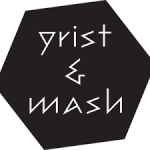 Major thanks to Oregon homebrewer, Jeremy Jalabert, for brewing this beer and bringing it to Portland, OR for data collection! In addition to brewing, Jeremy is the host of a killer homebrewing video series called Grist & Mash, which I highly recommend everyone check out.
Major thanks to Oregon homebrewer, Jeremy Jalabert, for brewing this beer and bringing it to Portland, OR for data collection! In addition to brewing, Jeremy is the host of a killer homebrewing video series called Grist & Mash, which I highly recommend everyone check out.
Short & Shoddy American Pale Ale
Recipe Details
| Batch Size | Boil Time | IBU | SRM | Est. OG | Est. FG | ABV |
|---|---|---|---|---|---|---|
| 6 gal | 30 min | 54.2 IBUs | 7.5 SRM | 1.050 | 1.014 | 4.9 % |
| Actuals | 1.05 | 1.01 | 5.3 % | |||
Fermentables
| Name | Amount | % |
|---|---|---|
| Lamonta (Mecca Grade) | 11 lbs | 74.58 |
| Metolius (Mecca Grade) | 3 lbs | 20.34 |
| Acid Malt | 12 oz | 5.08 |
Hops
| Name | Amount | Time | Use | Form | Alpha % |
|---|---|---|---|---|---|
| Cascade | 28 g | 30 min | Boil | Pellet | 5.5 |
| Magnum | 28 g | 30 min | Boil | Pellet | 12 |
| Cascade | 57 g | 10 min | Boil | Pellet | 5.5 |
| Cascade | 57 g | 1 min | Boil | Pellet | 5.5 |
Yeast
| Name | Lab | Attenuation | Temperature |
|---|---|---|---|
| Flagship (A07) | Imperial Yeast | 75% | 60°F - 72°F |
Download
| Download this recipe's BeerXML file |
After collecting the full volume of water the night before brewing, Jeremy weighed out and milled the grain.
He then measured out the kettle hop additions, which he kept stored in the fridge overnight.
The following morning, Jeremy quickly heated the brewing water in his kettle MLT then mashed in to hit the target mash temperature.
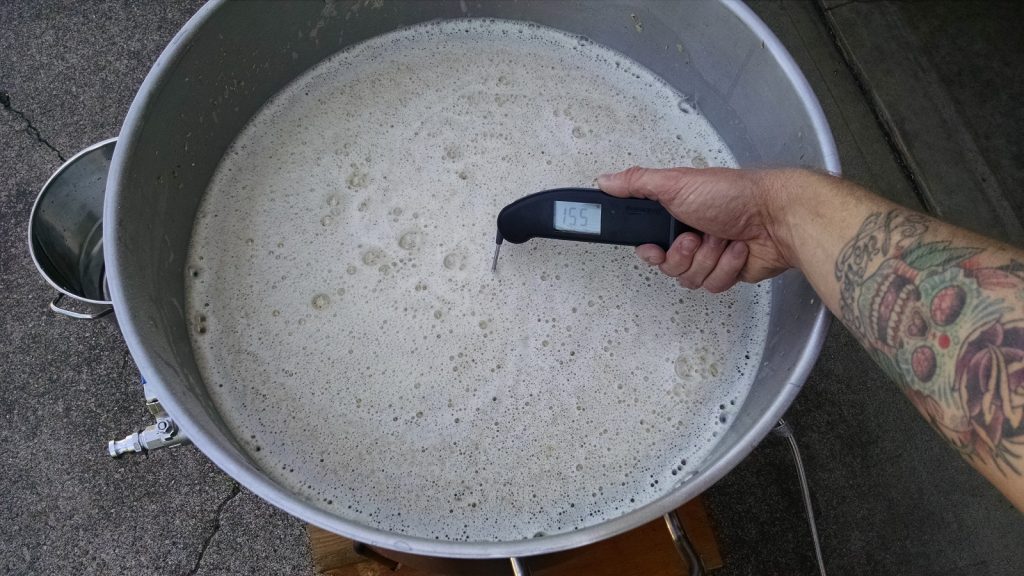
After a short 30 minute rest, Jeremy collected the sweet wort in his brew kettle and brought it to a rolling boil.
Just 30 shoddy minutes, and a few hop additions, later, the boil was complete, so Jeremy proceed with quickly chilling the wort.
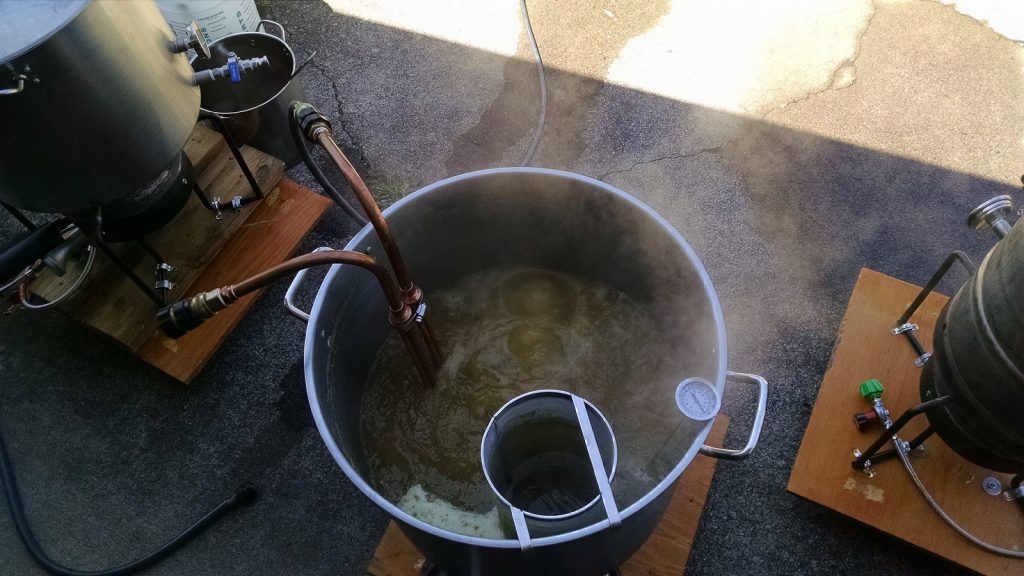
A refractometer reading showed the OG of the wort was slightly lower than expected, though still within normal stylistic range.
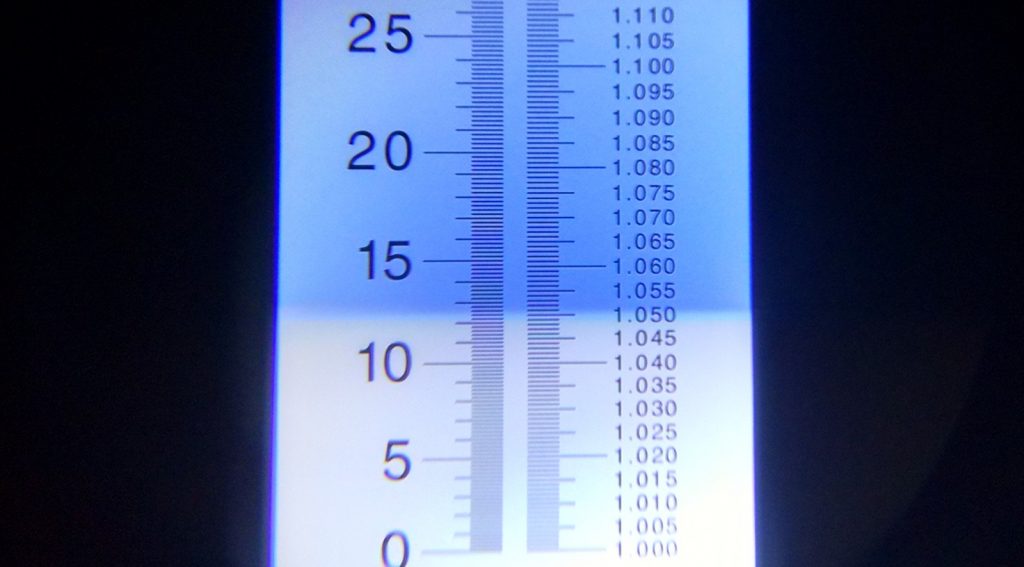
The chilled wort was then racked to a Brew Bucket.
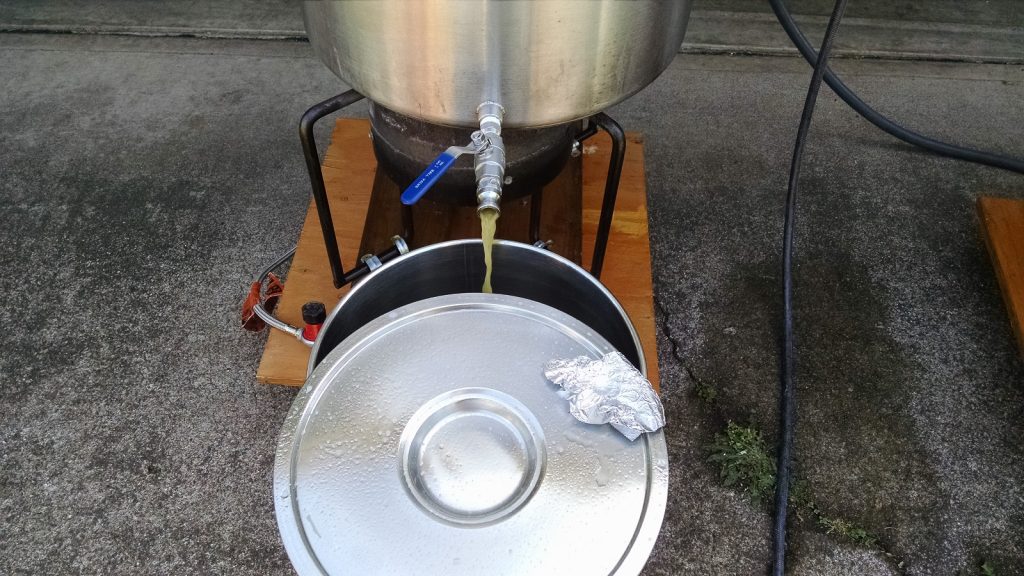
With the fermentor stored in a chamber controlled to 66°F/19°C, Jeremy pitched a pack of Imperial Yeast A07 Flagship directly into the wort.
A hydrometer measurement taken 2 weeks after yeast pitch revealed FG had been reached.
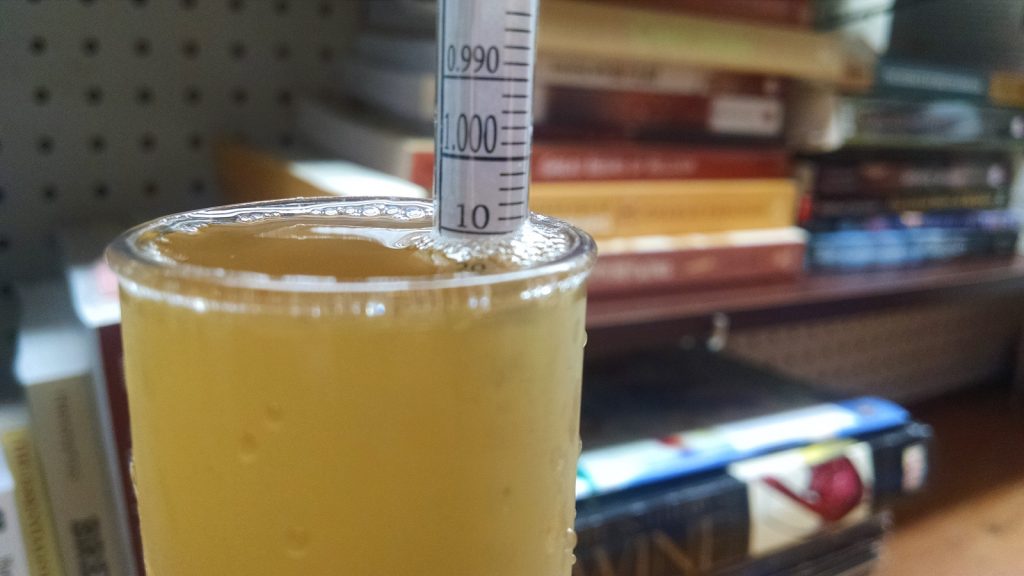
Jeremy cranked the temperature of his chamber down for an overnight cold crash. The following day, after adding a gelatin fining solution to an empty keg, the beer was packaged.
Following 2 weeks of cold conditioning, Jeremy pressure transferred the beer to a sanitized serving keg that he brought to Homebrew Con in Portland to be served to blind tasters. It was nicely carbonated with a light haze that wasn’t uncharacteristic for the style. Unfortunately, you’ll have to take my word for it because we forgot to get a picture during the conference. So here’s a shot of me with Jeremy and the other Oregon homebrewers who helped us out instead.
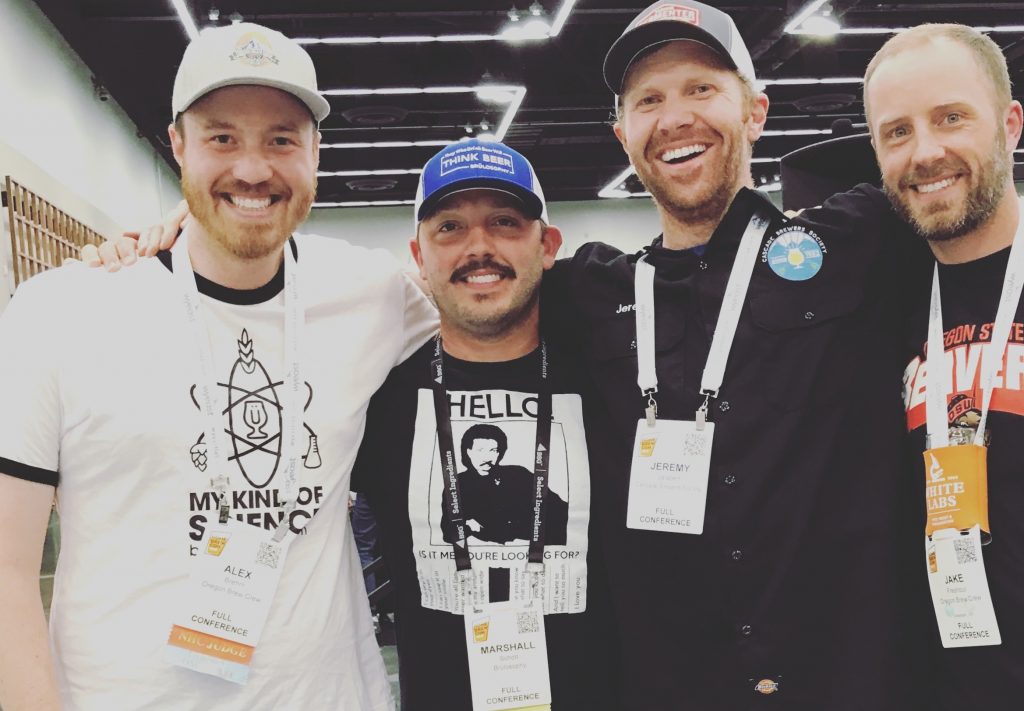
| RESULTS |
A total of 14 people of various levels of experience participated in this Short & Shoddy evaluation. Participants were first asked to identify the style they believed the beer to be based on their perception.
Tasters were then instructed to rate how hoppy, malty, and dry they perceived the beer to be on a 0-5 scale where a rating of 0 indicated “not at all” and 5 indicated “extremely;” these ratings were then averaged.
Tasters were provided a list of common hop, malt, and yeast characteristics then instructed to select from each the one they perceived as being strongest in the beer.
Hop Characteristics
Malt Characteristics
Yeast Characteristics
Next, participants were asked to indicate whether or not they detected any off-flavors in the beer; those who did were provided a list of common off-flavors and instructed to select the one they perceived as being strongest. Out of the 14 participants, 1 reported perceiving an ester off-flavor in the beer.
Tasters were then asked to rate how much they enjoyed the beer on a 0-5 scale where 0 indicated they hated it and 5 indicated they loved it.
Finally, the beer style was revealed to participants and they were asked to rate how representative it was on a 0-5 scale where 0 meant “not at all” and 5 meant “exactly.”
Jeremy’s Impressions: I was focused more on the Short & Shoddy brewing process than the actual beer due to my fascination with speeding up the brew day exponentially. I was moderately skeptical of the fast mash and boil, but knew it was likely going to work. The brew day went super fast and I found that it was so swift I didn’t have time for my normal routine of cleaning as I brew and listening to my favorite music. I could clearly see mash conversion was done after about 20 minutes. The short boil was my most sketchy brew day moment. I boiled super hot, volcano churning boil to the max, and crossed my fingers. The wort tasted just fine and I settled into the Short & Shoddy groove. I found the brew day to be liberating and opened my mind up to the multitude of possible ways to brew on the shoddy. So, the final product- it resulted in a decent summertime crusher. It was a tad citrusy/acidic and tasted overall in the ballpark of a lightly hopped American pale ale. Since it was Short & Shoddy, it was hard to try sips without obsessively searching for flaws. I found the beer to be quaffable and contextually interesting. My main goal was to make a beer that was drinkable given the shoddy methods– mission accomplished. I tasted it side-by-side with a Sierra Nevada Pale Ale and it had some very faint similarities, but not a clone, for sure. I plan to keep incorporating Short & Shoddy methods to shrink a brew session down to a few hours. Overall, this experience reminded me of a good underground punk rock show: loud, fast, intense, fun, and a bit anarchic.
My Impressions: Despite the number of tasty Short & Shoddy beers I’ve brewed myself, I was admittedly skeptical that Jeremy’s APA would turnout good, due in part to my unfamiliarity with his brewing process. However, the beer was really good, possessing a nice malt character to balance the classic hop profile that didn’t overshadow the rest of the beer. I didn’t detect any off-flavors and, if served blind, would never have guessed it was brewed using such deplorable methods.
| CONCLUSION |
In designing this American Pale Ale recipe, Jeremy and I settled on a hop bill we thought would produce a beer more inline with classic interpretations of the style, hence the absence of a dry hop addition. While it wasn’t a direct clone of Sierra Nevada’s well known Pale Ale, it certainly shared some characteristics and was a rather satisfying beer overall.
One of the more curious findings from the blind feedback was the high number of tasters who rated the most prominent yeast characteristic as being esters, which contradicted my perception of the beer as having a very clean fermentation profile. While it’s possible the participants were indeed picking up esters, given the fact fermentation was held at 66°F/19°C, I’m compelled to believe the fruity characteristics they were detecting came from the large addition of Cascade hops late in the boil.
Unfortunately, due to a flub I fully accept responsibility for, the participant pool for this particular survey was much lower than expected (apparently, collecting data while socializing and drinking beer and prepping for a podcast and drinking beer isn’t as easy as I thought). Regardless, the data we did glean seems to suggest the Short & Shoddy APA Jeremy brewed was representative of the style and did not produce any of the off-flavors expected given the methods used. Furthermore, tasters rated the beer as being largely enjoyable.
As we continue to check BJCP styles off the Short & Shoddy “to brew” list, I can’t help but consider the fact every single one has come back with generally positive results. From light lagers to hoppy IPA, it would appear rethinking and abbreviating certain parts of the brewing process doesn’t have the detrimental effects many believe, which leaves me all the more excited to continue exploring the impact of Short & Shoddy brewing.
If you have thoughts about this Short & Shoddy brew, please feel free to share in the comments section below!
Support Brülosophy In Style!
All designs are available in various colors and sizes on Amazon!
Follow Brülosophy on:
FACEBOOK | TWITTER | INSTAGRAM
If you enjoy this stuff and feel compelled to support Brulosophy.com, please check out the Support page for details on how you can very easily do so. Thanks!


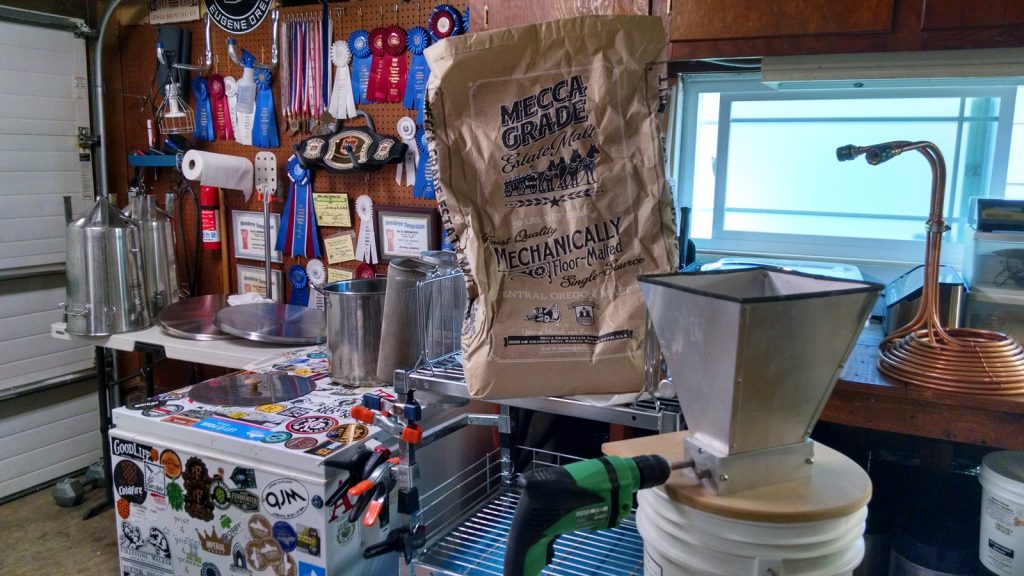
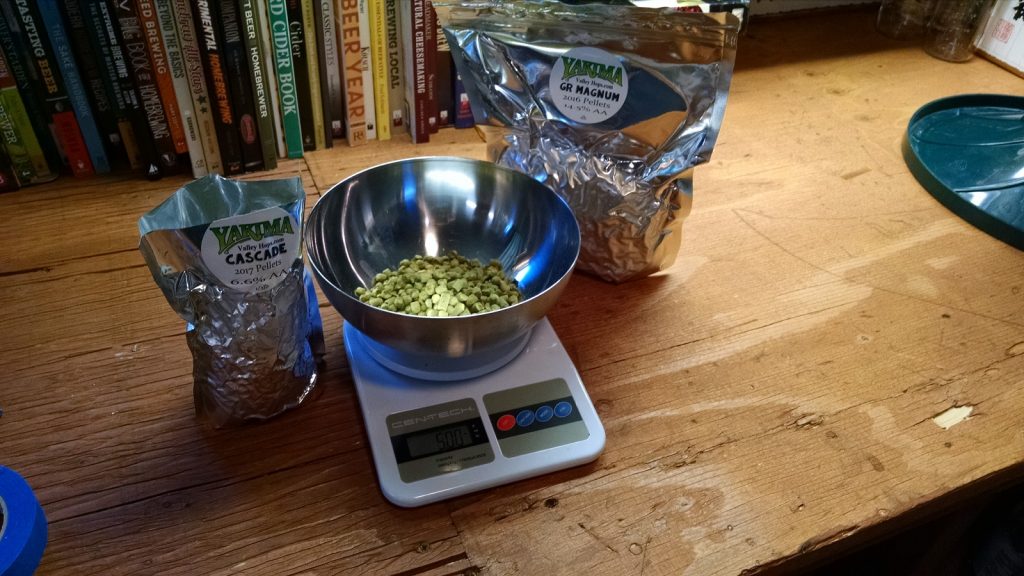
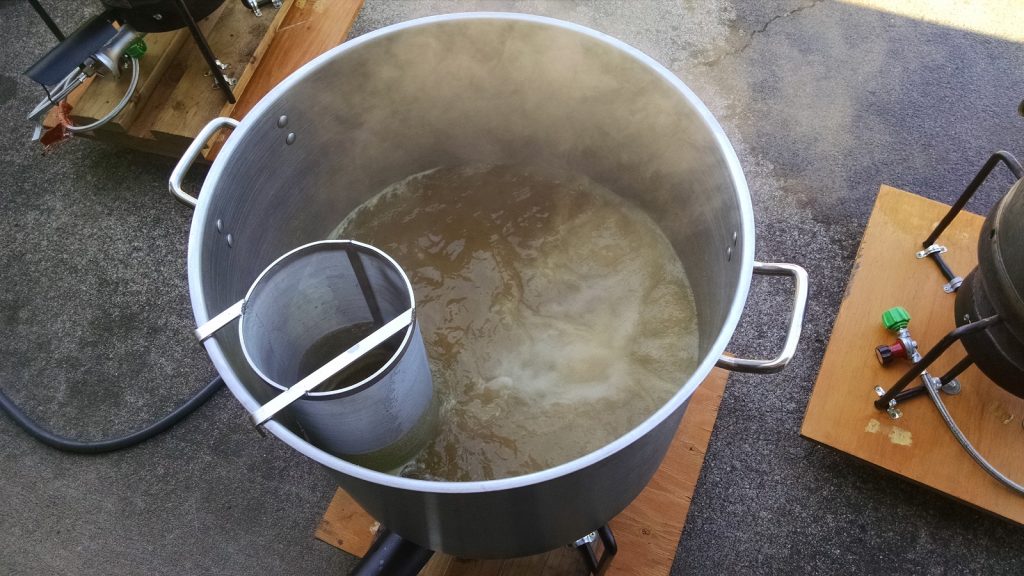
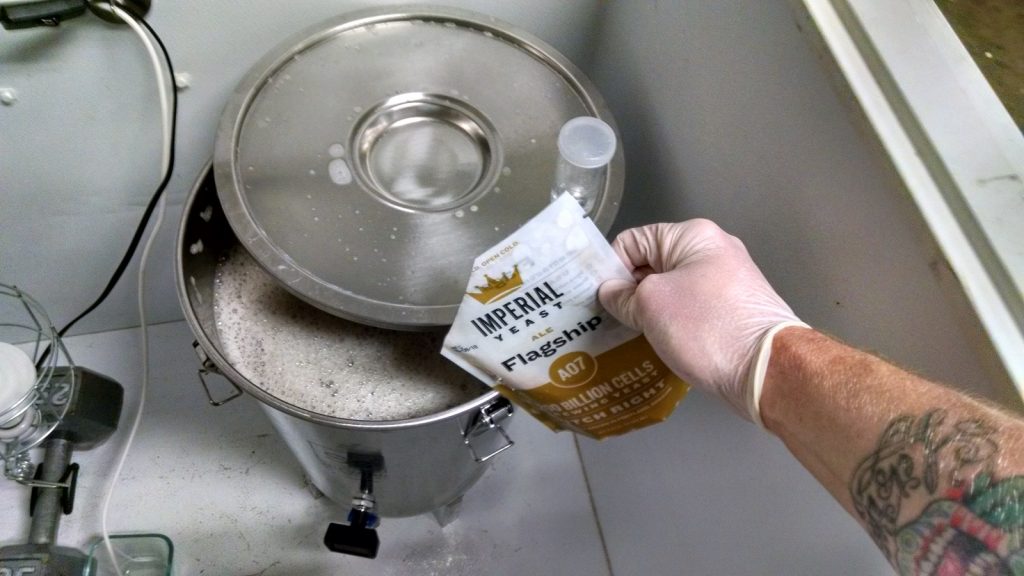
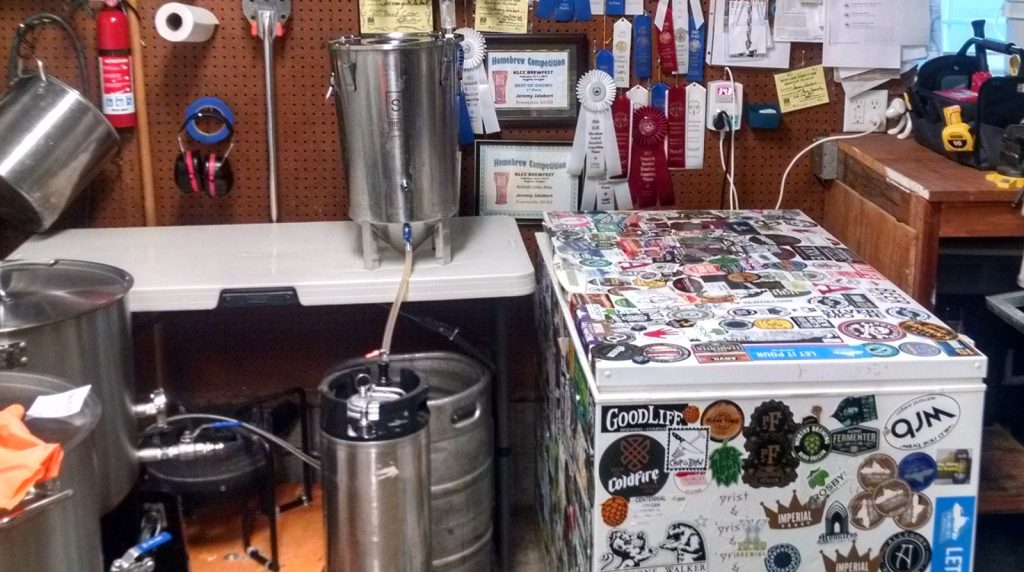
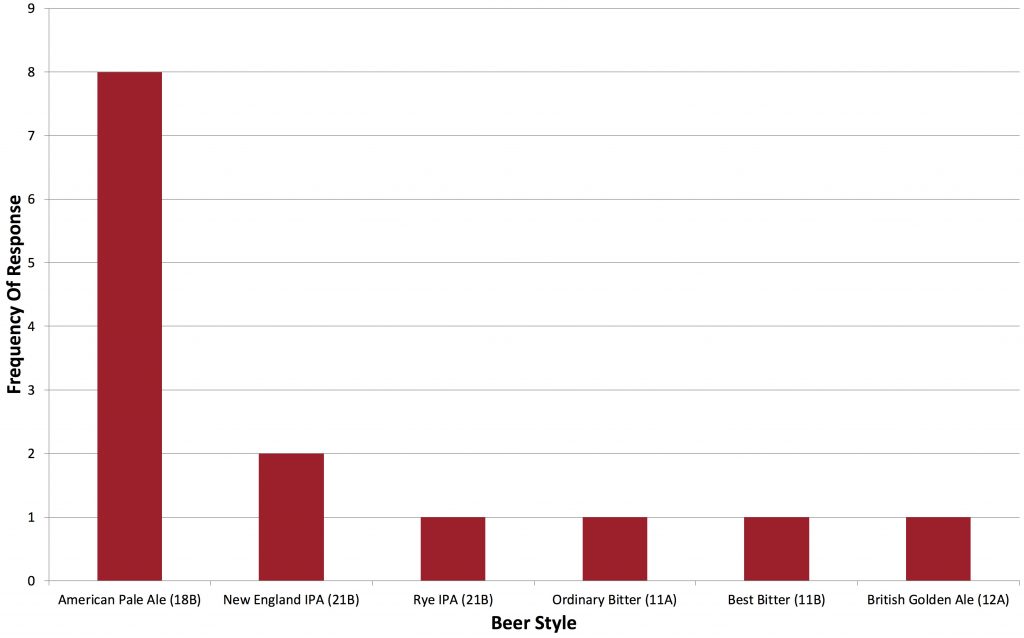
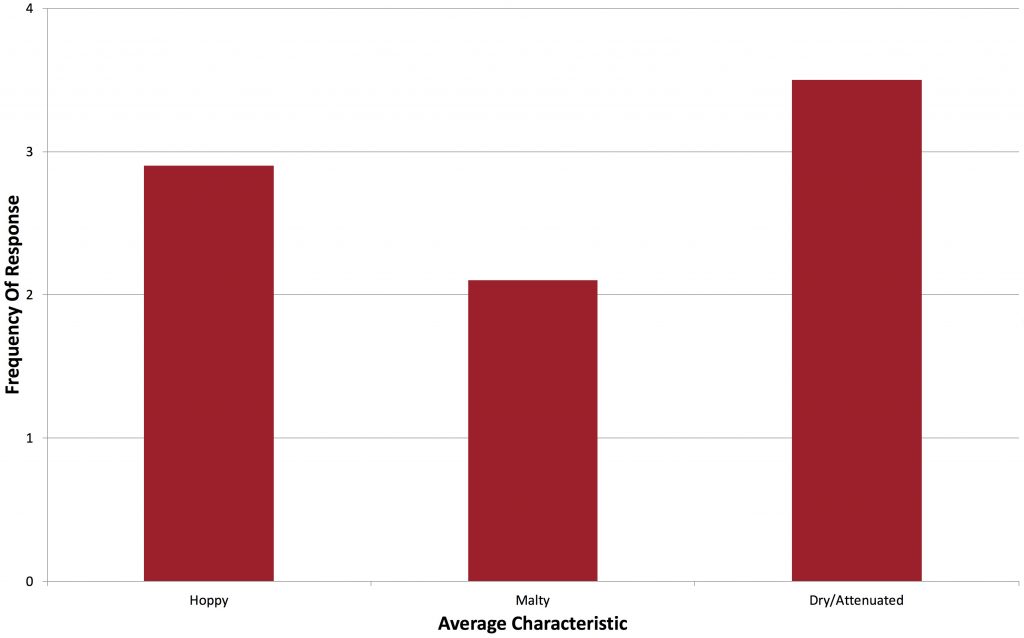
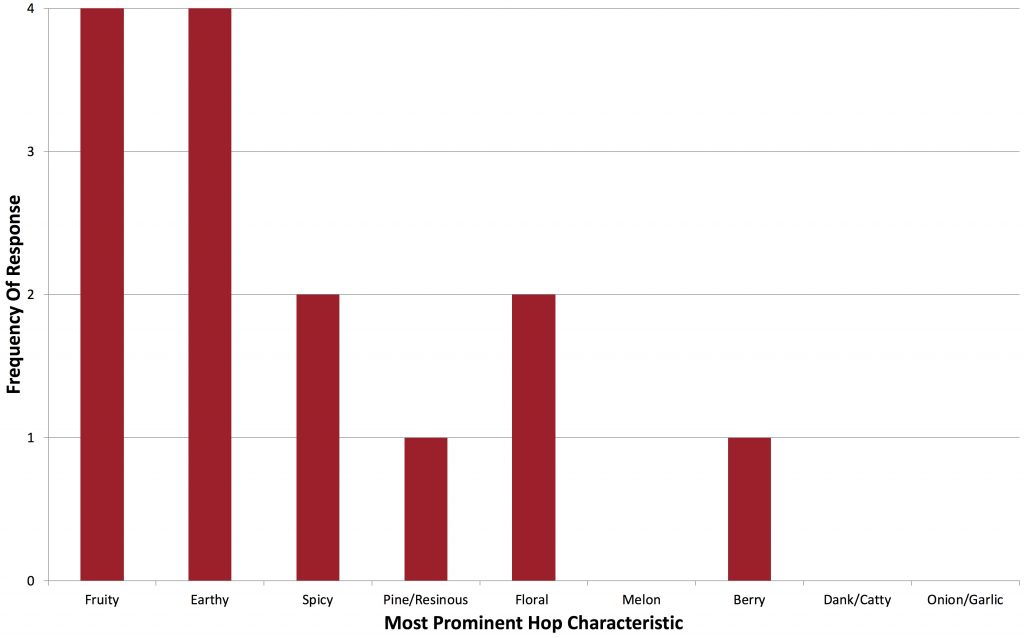
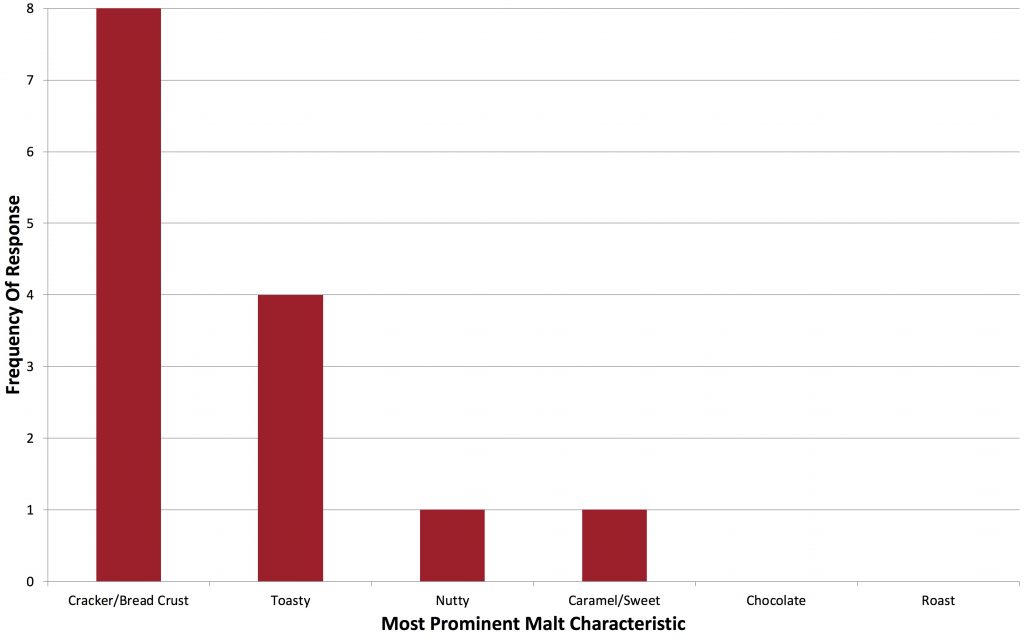
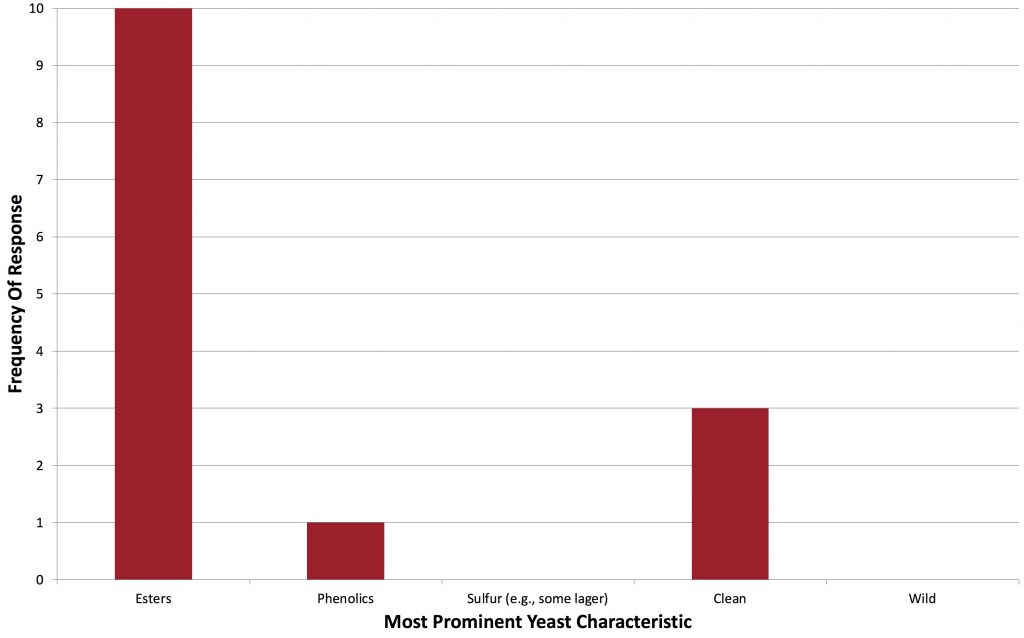
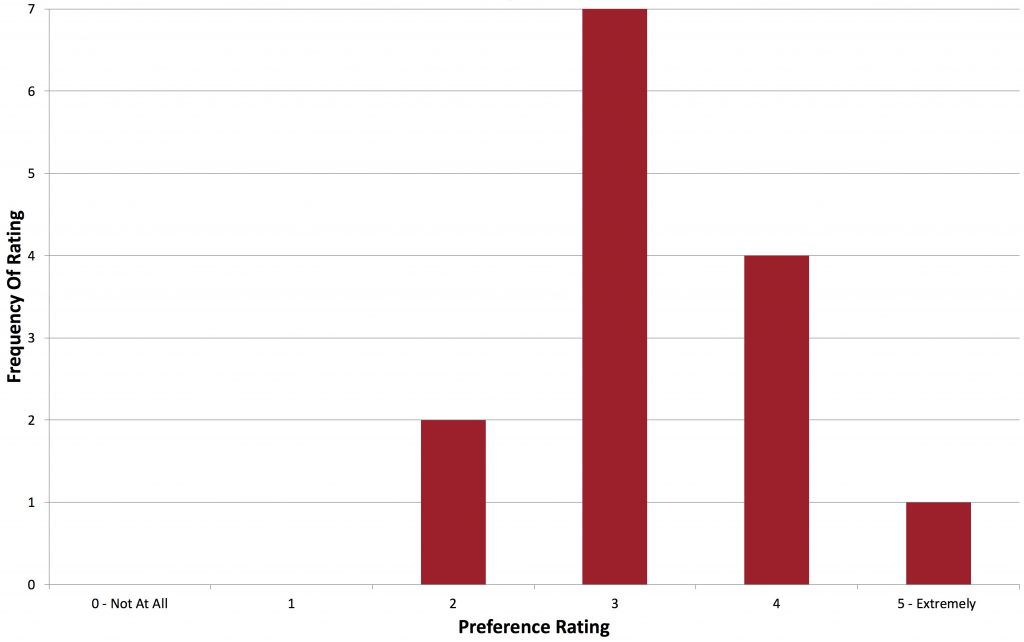
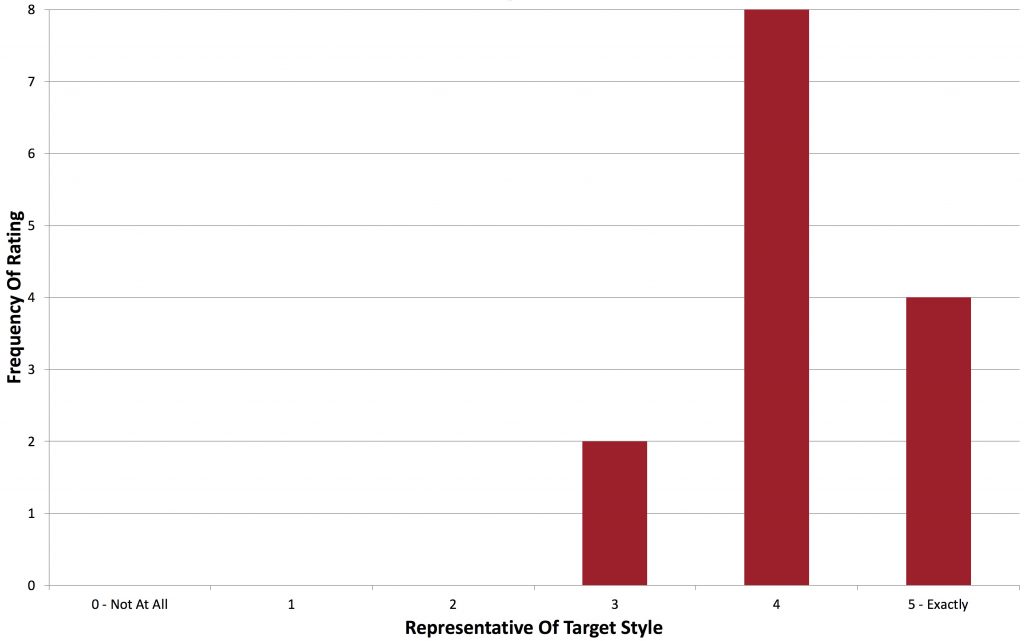










12 thoughts on “Short & Shoddy | American Pale Ale”
Nice, in the yeast characteristics figure it says 10 people reported ester flavours in the beer while in text: “Out of the 14 participants, 1 reported perceiving an ester off-flavor in the beer.” I assume the latter is correct?
Right– 10 people reported esters as the most prominent yeast characteristics, while only 2 reported it as a potential off-flavor. They’re separate questions. Ostensibly, those who felt it was a prominent yeast characteristics didn’t necessarily feel it was out of place.
I have made a couple of “fast” brews.
45min mash, 15min boil, chilling to 40°C/104°F, pitching Sigmund`s Voss Kveik.
Ferment fully for 20h at 37°C/98°F. Force carb with cold crash for a day.
Less than 2h from milling the grain to pitching and 48h from grain to glass.
Comes out very good beer actually.
Holy macaroni. That’s amazing. Any flaw or weird taste? Was it at least very sweet? 37°C, man…
I hardly consider a 30 minute mash and boil short or shoddy, so I’m not surprised this one turned out fine.
While I like the idea of shortening my brew day I’d like to see some more comparison data. This method may have resulted in an acceptable APA but how would it stack up against the same recipe brewed the “normal” way with a longer mash, boil and yeast starter?
Although it may be interesting to do a side by side comparison, I think it defeats the essences of the Short and Shoddy series. Maybe you could do your own experiment for a Bru Club article. I’m sure others have the same curiosity. Give it shot.
I would also like to see a comparison between the short & shoddy version and the full time version. I would rather spend a couple extra hours and have a superior beer though, but if I can have the same quality and save a couple hours, I’m all for that.
“A refractometer reading showed the OG of the wort was slightly lower than expected, though still within normal stylistic range.” This sentence made me scratch my head when compared to the Est. OG (1.050) and Actual OG (1.050 in recipe, 1.051 under picture) reported in the recipe section. Something may be amiss?
https://brulosophy.com/2017/06/26/traditional-vs-short-shoddy-brewing-process-exbeeriment-results/
I would say it’s probably worth spending the extra time and effort on a brew if you can spare it, but cutting a few corners isn’t necessarily the end of the world as long as those corners aren’t related to cleanliness / sanitization.
If saving some time to make a brew using THAT MUCH grist is a trade off… I’m going to stay traditional…. Especially using that top shelf grain… Sneezles61
It’s kind of a bummer that you don’t use typical malt and yeast ingredients anymore. Eg what’s the base malt…2 row? I find myself reading less because of that but still enjoy the articles.